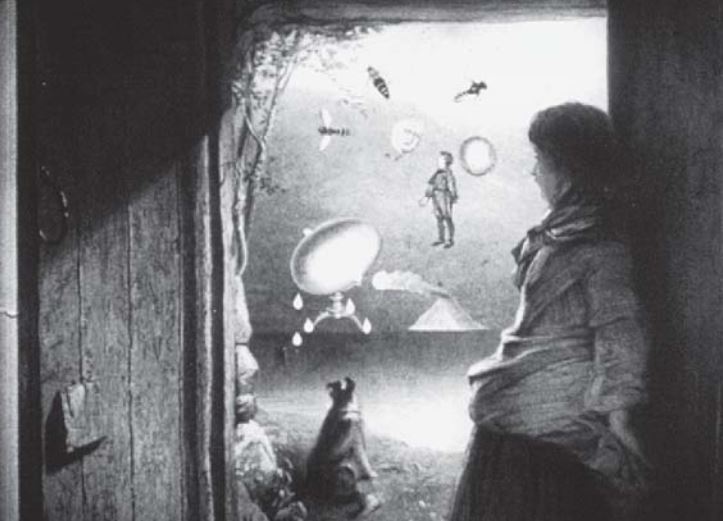Lawrence Jordan’s animated collage work draws on romantically charged objects and illustrations taken from Victorian-era engravings, which he juxtaposes in myriad combinations to suggest a dreamscape rich with provocation. An heir to the surrealist impulse of Max Ernst and Harry Smith, Jordan began working with cutouts in the early sixties. The first of his many animated films, Duo Concertantes (1964) is a lyrical and poetic meditation on the artistic impulse. The film is a reverie of contrasting images exploring the interplay of creativity and chaos: grand architecture and nineteenth-century landscapes, scientific tools and galactic musings, classical sculpture and biology. The human desire to control and communicate is present from the opening image of the imposing and beautiful Glass Palace, home of the 1900 Centennial Exposition, wherein we see a bird captured in a cage, and is further symbolized by a man with his camera and various tools. The natural world’s unmitigated life force challenges that effort when classical sculptures and a printing press fall into the sea and atoms spin randomly through space. The film employs telling combinations of images to signify the quest of a young man to understand the changing world and of a young woman to dream art and cosmic forces into illuminating, uneasy connections.

Collage animation can be an inspiring vehicle for presenting multi-faceted concepts through apparently simple interactions. It allows for a compression of narrative and visual ideas not possible in all cinematic forms. Duo Concertantes inspires deep levels of connective interpretation that expand with each viewing of the film, due in part to Jordan’s use of found materials and his expansion of their content, using motion and proximity to suggest new meanings. Aman stands knee-deep in water performing simple acts of magic. A sphere takes on transformative power. A pensive woman gazes out to see an egg with butterfly wings ascend. Jordan’s palette, inspired by his early association with Joseph Cornell, pulls images from a source of mystery and lost innocence. The animation is brought to life through skillful handwork and delicate manipulation.
Jordan’s collage films are an early example of animation that steadfastly moves beyond the pigeonhole of entertainment to explore experimental animation as an art form. In this way his work has served as an inspiration to the fine-art animators who followed. A thread of his intentions can be seen in the work of Lewis Klahr, Janie Geiser, Martha Colburn, and Joshua Mosley, as well as my own work, to mention only a few. The truly whimsical yet serious nature of Jordan’s work creates a legacy of real power. ✪
![[Futuristika!]](https://futuristika.org/wp-content/uploads/2020/12/futuristika-scaled.png)
